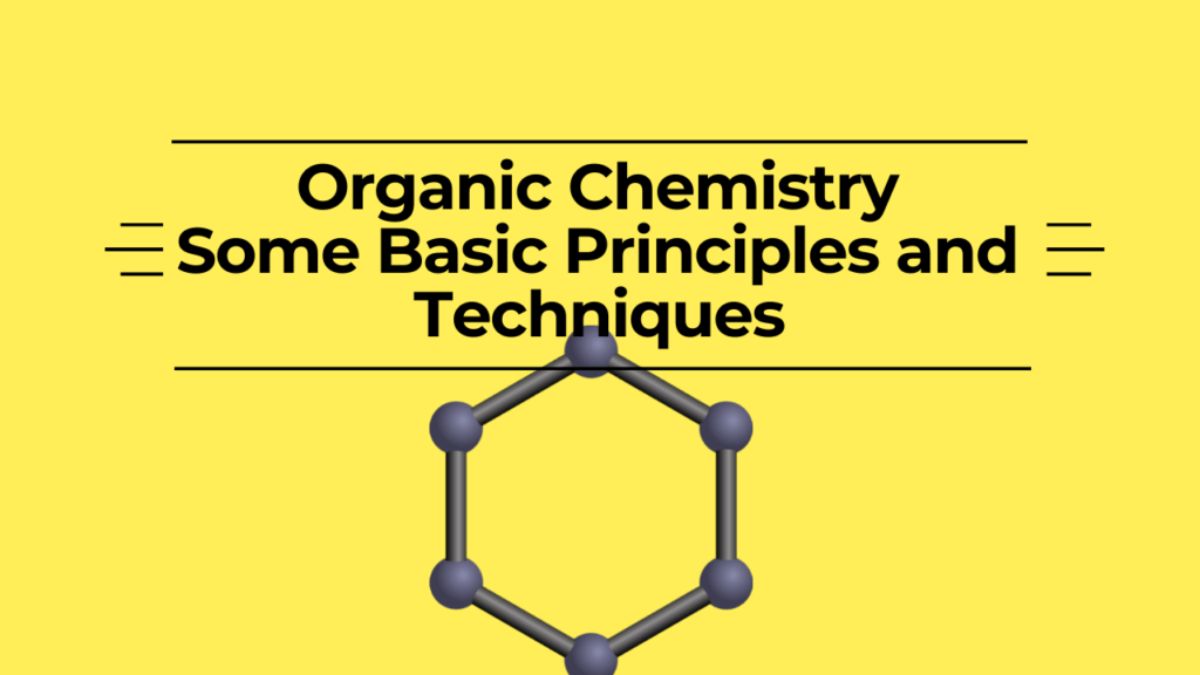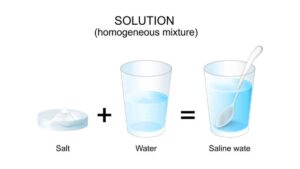The Organic Chemistry is a major part of the NEET Chemistry Syllabus 2026; hence, all the aspirants of the NEET 2026 Exam must start preparing for it by studying all the important topics mentioned in the syllabus. In this article, we have shared the NEET Notes for the chapter Some Basic Principles and Techniques so that all the aspirants can have a look at it and get an understanding of all the important topics. Scroll down in the article to access the NEET Notes as well as the important questions from the chapter to complete exam preparations.
Some Basic Principles and Techniques
Organic chemistry is a branch of chemistry that deals with the study of carbon-containing compounds and their properties, structure, composition, reactions, and synthesis. The topic “Some Basic Principles and Techniques of Organic Chemistry” is the foundation for understanding all other chapters in organic chemistry. Key concepts include systematic IUPAC nomenclature for naming compounds, classification based on structure and functional groups, and the study of reaction mechanisms like addition, substitution, and elimination. Advanced topics cover effects such as the inductive effect, electromeric effect, resonance, and hyperconjugation, which help explain how electrons move during reactions.
Classification of Organic Compounds
Organic compounds are classified primarily as acyclic (open-chain) or cyclic (closed-chain) based on their carbon skeleton. Further classifications are made based on structural features, such as whether the chain is straight or branched, or if the ring is homocyclic (only carbon atoms) or heterocyclic (contains other atoms like N, O, S). Compounds can also be classified by functional groups, such as hydrocarbons (alkanes, alkenes, alkynes), alcohols, and aldehydes.
-
Acyclic (Open-chain) Compounds:
- Carbon atoms are linked in straight or branched chains that do not form rings.
- Can be saturated (single bonds only) or unsaturated (at least one double or triple bond).
-
Cyclic (Closed-chain) Compounds:
- Carbon atoms form one or more rings.
- Homocyclic (Carbocyclic) Compounds: Rings are made of only carbon atoms.
- Alicyclic: Non-aromatic cyclic compounds.
- Aromatic: Cyclic compounds with special stability, like benzene.
- Heterocyclic Compounds: Rings contain atoms other than carbon, such as oxygen, nitrogen, or sulfur.
- Can be alicyclic (like furan) or aromatic (like pyridine).
-
Hydrocarbons:
Contain only carbon and hydrogen.
- Alkanes: Single bonds only (e.g., ethane).
- Alkenes: At least one carbon-carbon double bond (e.g., ethene).
- Alkynes: At least one carbon-carbon triple bond (e.g., ethyne).
- Aromatic Hydrocarbons: Ring structures with delocalized electrons, like benzene.
Structural Representation of Organic Compounds
Structural representations show how atoms are bonded in organic compounds, with common methods including complete, condensed, and bond-line structural formulas. Complete structural formulas show every atom and bond, while condensed formulas abbreviate them by grouping atoms together.
- Molecular Formula: Shows the total number of atoms (e.g., C₂H₆O).
- Condensed Formula: CH₃CH₂OH
- Bond-Line Formula: Simplified representation without showing all hydrogen atoms.
- 3D Representation: Shows the spatial arrangement of atoms (wedge-dash notation).
Nomenclature of Organic Compounds (IUPAC System)
The nomenclature of organic compounds is a system for systematically naming them using a structure based on a prefix, root, and suffix. The process involves identifying the longest carbon chain (the root), numbering the chain to give substituents the lowest possible numbers, and modifying the base name with prefixes for side chains and functional groups, and a suffix for the highest priority functional group.
Naming an organic compound involves identifying:
- Longest Carbon Chain (Parent Chain)
- Functional Group (Suffix or Prefix)
- Substituents (Branches or Groups)
- Position of Substituents (Numbering of Carbon Atoms)
Common Functional Groups:
| Common Functional Groups | |||
| Functional Group | Prefix | Suffix | Example |
| –OH | Hydroxy– | –ol | Ethanol |
| –CHO | Formyl– | –al | Ethanal |
| –COOH | Carboxy– | –oic acid | Ethanoic acid |
| –NH₂ | Amino– | –amine | Ethylamine |
Isomerism
Isomerism is the phenomenon where compounds have the same molecular formula but different structural or spatial arrangements of atoms, which leads to different properties. These compounds are called isomers. The two main types of isomerism are structural isomerism (where atoms are connected differently) and stereoisomerism (where atoms are connected the same but arranged differently in 3D space).
Types of isomerism include:
- Structural Isomerism:
- Chain isomerism
- Position isomerism
- Functional isomerism
- Metamerism
- Tautomerism
- Stereoisomerism:
- Geometrical (cis–trans) isomerism
- Optical isomerism (enantiomers)
Purification Techniques of Organic Compounds
Purification techniques for organic compounds include crystallization and sublimation for solids, and distillation (simple, fractional, steam, or vacuum) for liquids. Other common methods are chromatography, which separates compounds based on their differing interactions with a stationary and mobile phase, and differential extraction to separate components in a solution.
Common Techniques for Solids:
- Crystallization
- Sublimation
Common Techniques for Liquids:
- Simple Distillation
- Fractional Distillation
- Vaccum Distillation
- Steam Distillation
Common Techniques for Both Liquids & Solids:
- Chromatography
- Column Chromatography
- Thin-Layer Chromatography (TLC)
- Gas Chromatography (GC)
- Differential Extraction
- Filtration
NEET Important Questions – Some Basic Principles and Techniques Chapter
Question 1. Define catenation and explain its importance in organic chemistry.
Question 2. Differentiate between chain isomerism and functional isomerism with examples.
Question 3. What is the difference between sigma and pi bonds?
Question 4. Write the IUPAC name of CH₃CH₂CH₂COOH.
Question 5. Explain the process of Lassaigne’s test for the detection of nitrogen.
Question 6. What is hybridization? Describe sp² hybridization with an example.
Question 7. Name two techniques used for the purification of organic compounds.
Question 8. How is the empirical formula different from the molecular formula?
Question 9. What are the main types of organic reactions?
Question 10. Explain the difference between aliphatic and aromatic compounds.
| Also Check | |
| Structure of Atom NEET Notes | |
| Ionic Equilibrium NEET Notes | |
| Chemical Bonding and Molecular Structure NEET Notes | |
| Chemical Thermodynamics NEET Notes | |
| The P block Elements NEET Notes | |









 NEET Preparation Strategy 2026: Detailed...
NEET Preparation Strategy 2026: Detailed...
 Free NEET Sample Papers 2026 PDF | Downl...
Free NEET Sample Papers 2026 PDF | Downl...
 Salt Analysis NEET Notes, Check Importan...
Salt Analysis NEET Notes, Check Importan...









